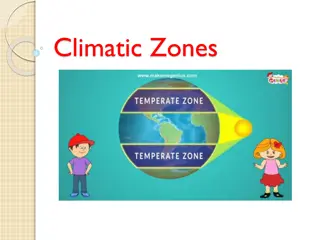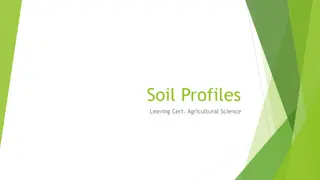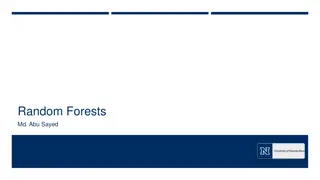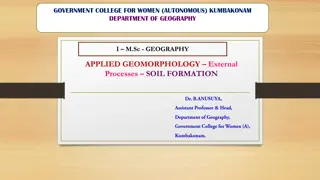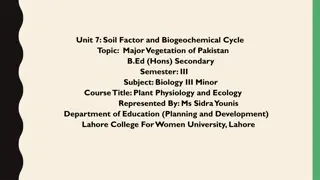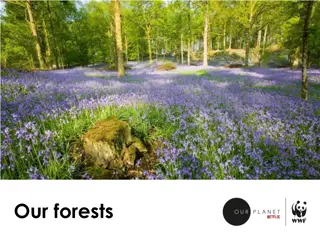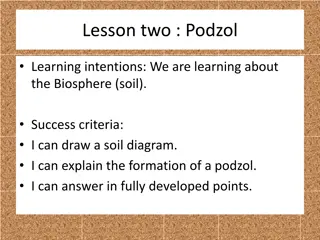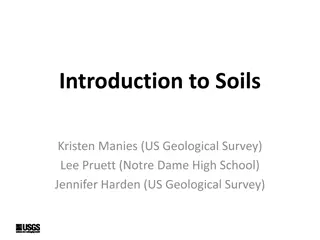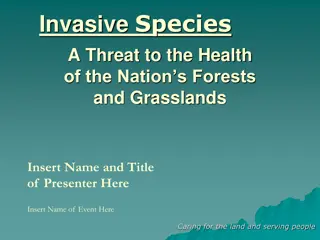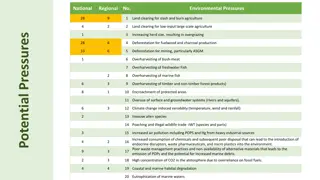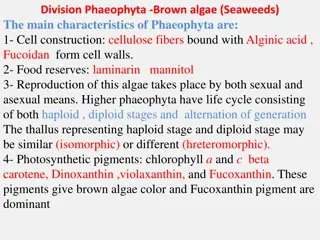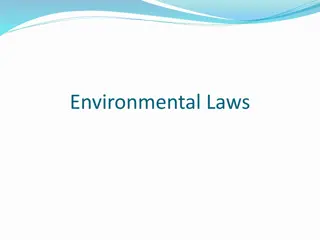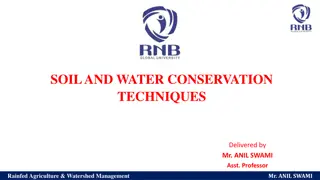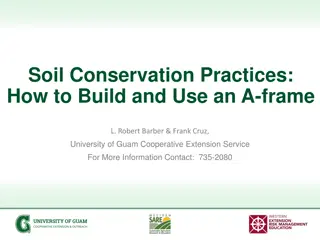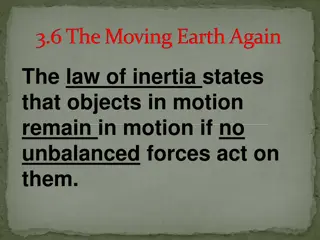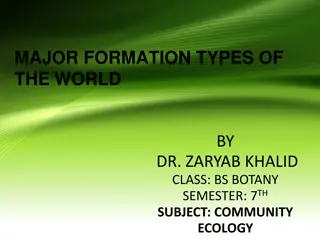Understanding Brown Earth Soil Formation in Temperate Broadleaved Forests
Brown Earth soils are characteristic of temperate broadleaved deciduous forests in regions like Western Europe, Russia, and North America. Deciduous trees contribute to the formation of these soils by providing a rich leaf litter that breaks down rapidly due to the mild climate. Soil organisms play a crucial role in mixing the soil, aerating it, and preventing the formation of distinct horizons. Various factors such as climate, vegetation, rock type, and drainage influence the development of Brown Earth soils, leading to unique characteristics and properties.
Download Presentation

Please find below an Image/Link to download the presentation.
The content on the website is provided AS IS for your information and personal use only. It may not be sold, licensed, or shared on other websites without obtaining consent from the author. Download presentation by click this link. If you encounter any issues during the download, it is possible that the publisher has removed the file from their server.
E N D
Presentation Transcript
Lesson three: Brown Earth Learning intentions: We are learning about soil. Success criteria: I can draw an annotated diagram of a brown earth soil. I can explain the formation of a brown earth soil.
Starter Look at page 4 of your booklets. What soil forming processes do you think will be found in a brown earth soil with the following characteristics. 1. Precip > evap in winter. summer. 2. Found in woodland areas where the leaves fall off the trees seasonally. Precip < evap in
Brown Earth Brown Earth soils develop beneath temperate broadleaved deciduous forests of Western Europe, Russia and North America.
KEY Red: soil organisms Green: vegetation Blue: climate Pink: parent material (rock type) Black: drainage/relief (these are very closely linked)
Deciduous trees and grasses provide abundant and deep leaf litter which is broken down rapidly by the mild climate. There is a presence of soil organisms which break down leaf litter producing a mildly acidic (pH5-6.5) mull. They also ensuring the mixing of soil, aerating it and preventing the formation of distinct horizons. AO Tree roots penetrate deep into the soil ensuring that materials are recycled back to the vegetation. This is why B is lighter brown in colour compared to A. A B P slightly exceeds E, causing downward leaching of the most soluble minerals and the possibility of an iron pan forming. When E > P in the summer, capillary action can take which brings up the minerals from the B to the A horizon, further helping to mix the soil. C
Greater altitude results in temperatures and the growing season being reduced and an increase in precipitation. Rock type determines the rate of weathering. Hard rocks e.g. schist take longer to weather producing thinner soils, than soft rocks e.g. shale that weather quickly AO A Steeper slopes tend to produce thinner soils due to gravity. There is a range of parent materials with limestone producing lighter coloured alkaline soils. South facing slopes with a greater amount of sunshine and higher temperatures increase the rate of humus production. B C
Brown Earth Deciduous trees provide a thick leaf litter which is broken down quickly due to the mild climate. This produces a mull humus (pH5-6.5) Brown Earth soils have many soil organisms found in them. The organisms help to mix the soil and prevent distinct horizons. When precipitation is higher than evaporation during the winter leaching occurs. Iron minerals are washed down and an iron pan may form in the B horizon.
Brown Earth Steeper slopes tend to produce thinner soils due to gravity Hard rocks e.g. schist weather slower producing thin soils, whereas soft rocks e.g. shale weather more quickly South facing slopes receive more sunshine and higher temperatures therefore speeding up humus production.
Task 3 a) Using the previous slide, draw a diagram of brown earth using coloured pencils. b) Explain how the factors such as the ones stated affect the formation of a brown earth soil. (6) Natural vegetation, Climate, Relief, Soil organisms, Drainage, and Rock type.
Developed Point Brown Earth soils have many soil organisms found in them. The organisms help to mix the soil, aerating it and preventing distinct horizons. Make the point, give detail/explain, give more detail (or an example)
Homework 1. Explain how the factors such as the ones stated affect the formation of a podzol soil. (6) Natural Climate, Relief, Soil organisms, Drainage, and Rock type. vegetation, 2. Explain how the factors such as the ones stated affect the formation of a brown earth soil. (6) Climate, Relief, Soil organisms, Drainage, and Rock type. Natural vegetation, 3. Explain how the factors such as the ones stated affect the formation of a gley soil. (6) Climate, Relief, Soil organisms, Drainage, and Rock type. Natural vegetation,
Success criteria I can draw an annotated diagram of a brown earth soil. I can explain the formation of a brown earth soil.
Plenary Under what conditions does capillary action happen? What is the opposite of it? What does this cause?


